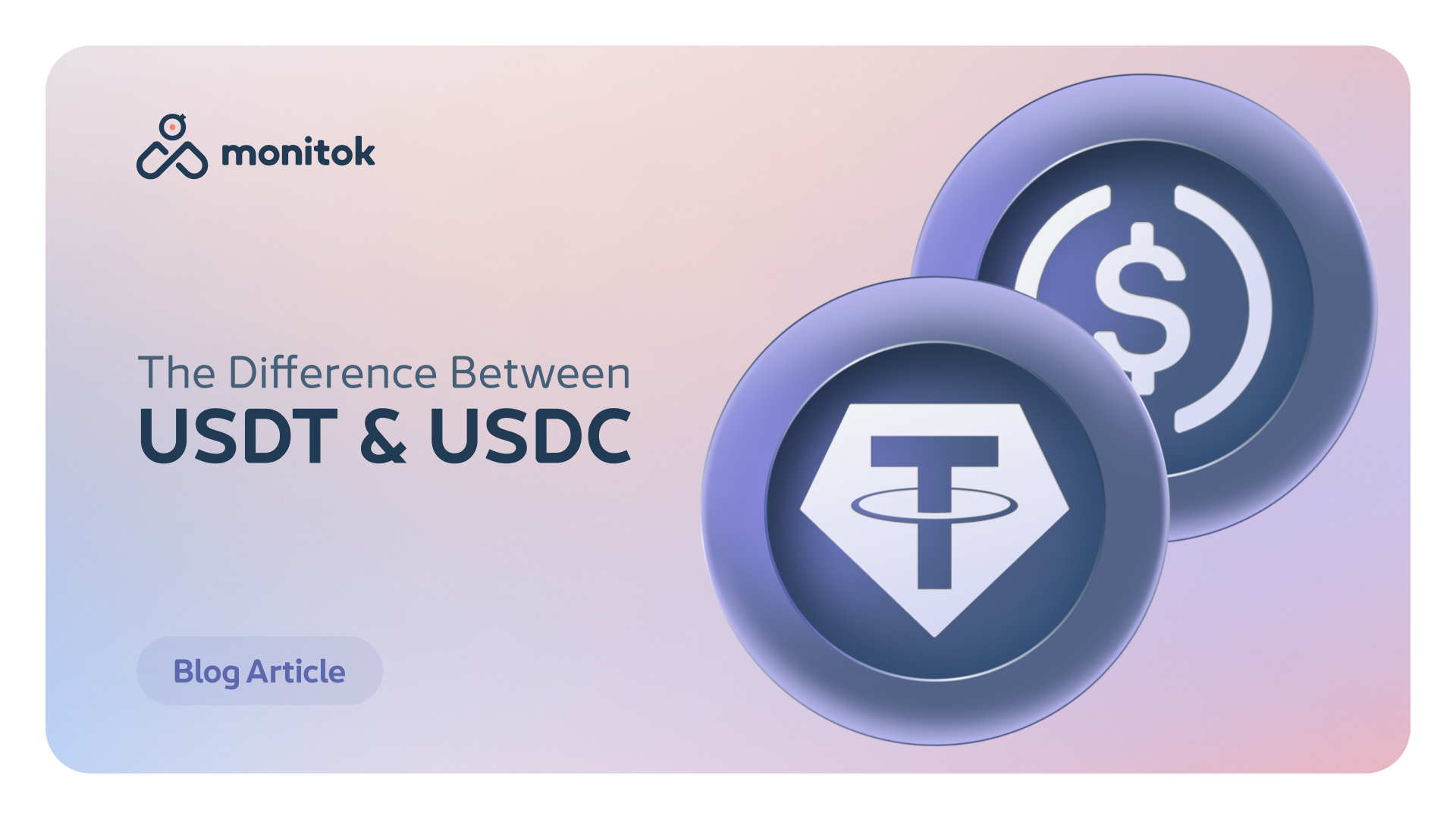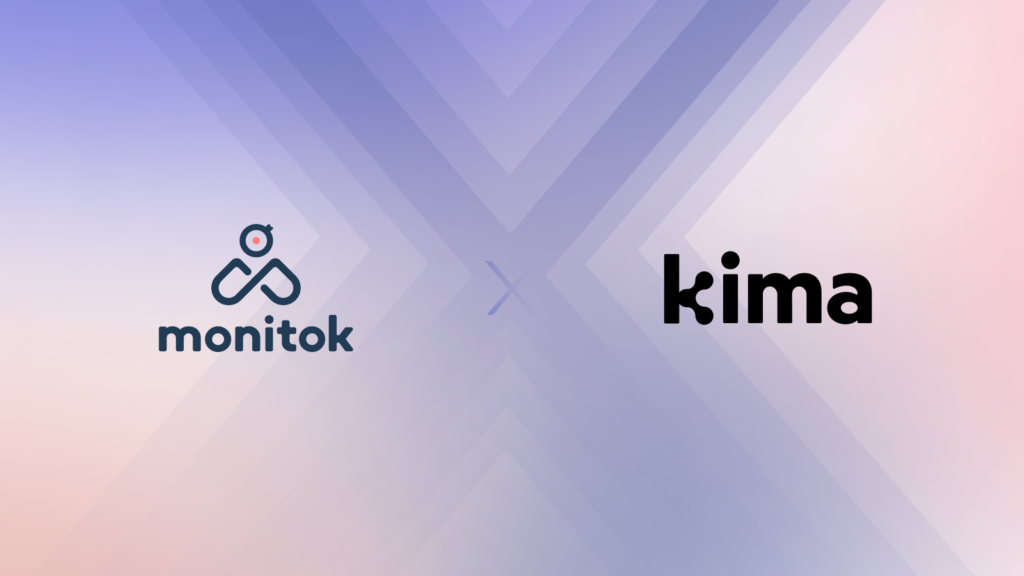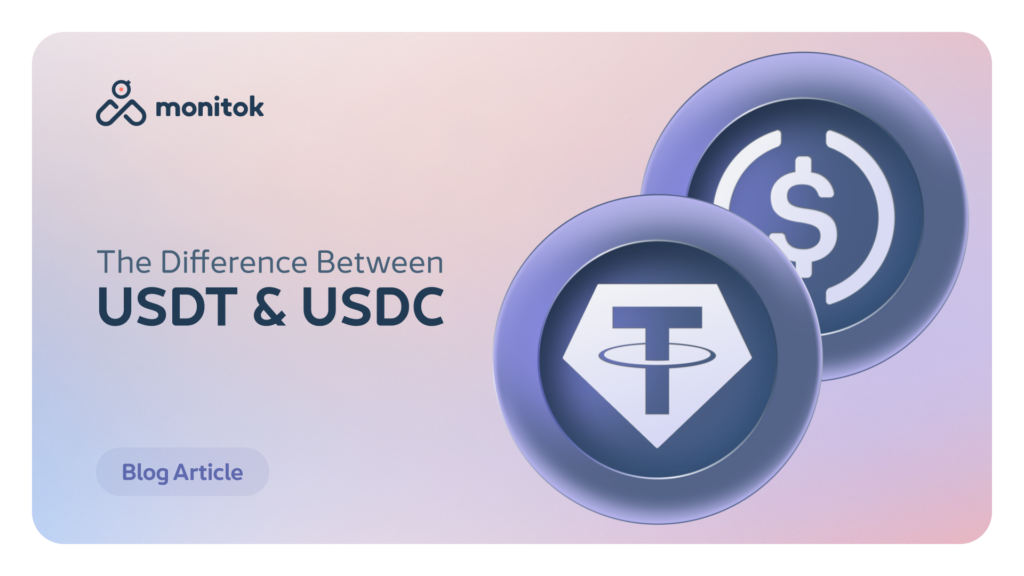Stablecoins have emerged as a crucial asset class in crypto, providing stability against the volatility. Among the top stablecoins are USD Coin (USDC) and Tether (USDT). This article explains the differences between USDC and USDT, exploring their features, volumes, similarities, and differences.
What Are Stablecoins? How Do They Work?
Stablecoins are a type of cryptocurrency designed to minimize price volatility by being pegged to a reserve asset, typically a fiat currency like the US Dollar. They offer the benefits of cryptocurrencies, such as fast transactions and low fees, while maintaining a stable value. Stablecoins achieve their stability through various mechanisms, including collateralization with fiat or other assets, or through algorithmic adjustments.
Types of Stablecoins
- Fiat-Collateralized Stablecoins: These are backed by fiat currency reserves, held in a bank account or equivalent. Each stablecoin issued corresponds to a specific amount of fiat currency.
- Crypto-Collateralized Stablecoins: These use cryptocurrencies as collateral, often over-collateralized to account for the volatility of the underlying assets.
- Algorithmic Stablecoins: These rely on algorithms and smart contracts to maintain their peg by adjusting the supply based on market demand.
What is USDC?
USD Coin (USDC) is a fully collateralized US Dollar-backed stablecoin launched by the Centre Consortium, founded by Circle and Coinbase. Each USDC token is backed by a dollar held in reserve, ensuring a 1:1 value with the US Dollar.
Key Features of USDC
- Transparency: USDC offers regular audits and reports on reserves, ensuring transparency and trust. The Centre Consortium provides monthly attestation reports from a major accounting firm to verify the reserves backing USDC.
- Regulation: Issued by regulated financial institutions, USDC complies with financial regulations and standards. It adheres to stringent Know Your Customer (KYC) and Anti-Money Laundering (AML) procedures.
- Security: Built on the Ethereum blockchain, USDC benefits from strong security and smart contract functionality. It is also available on other blockchain platforms like Arbitrum, Algorand, Solana, and Stellar, enhancing its interoperability.
- Use Cases: USDC is widely used in DeFi applications, trading, payments, and remittances. Its stability and transparency make it a preferred choice for various financial operations.
USDC Volume
USDC has seen significant growth in volume and market capitalization, driven by its use in trading, payments, and decentralized finance (DeFi) applications. Its transparency and regulatory compliance have made it a preferred choice for institutions and individual users alike. As of 2024, USDC’s market cap stands at over $32 billion, reflecting its widespread adoption and trust in the crypto community.
What is USDT?
Tether (USDT) is another leading stablecoin, pegged to the US Dollar. Launched by Tether Limited, USDT aims to combine the benefits of cryptocurrency transactions with the stability of the US Dollar.
Key Features of USDT
- Liquidity: USDT boasts high liquidity and is widely used across cryptocurrency exchanges. It is often the most traded cryptocurrency by volume, surpassing even Bitcoin in daily trading volumes.
- Adoption: It is one of the oldest and most widely adopted stablecoins, with a strong presence in the trading community. USDT is available on multiple blockchains, including Ethereum, Arbitrum, Tron, EOS, and others, enhancing its reach and utility.
- Versatility: USDT’s availability on multiple blockchain platforms increases its versatility and usability in various applications, from trading to remittances.
- Use Cases: USDT is used extensively in trading, allowing traders to move funds quickly between exchanges, hedge against market volatility, and participate in arbitrage opportunities.
USDT Volume
USDT consistently ranks as one of the highest in terms of trading volume and market capitalization. Its widespread adoption and integration with numerous exchanges and platforms contribute to its substantial market presence. USDT’s market cap exceeds $111 billion, making it the largest stablecoin by market cap and trading volume.
USDC vs USDT
We have collected similarities and differences of USDC vs USDT and presented them here below
| Category | USDC | USDT |
|---|---|---|
| Creator | Centre Consortium (by Circle) | Tether Limited |
| Year established | 2018 | 2014 |
| Price peg | 1 USDC : 1 USD | 1 USDT : 1 USD |
| Market cap (May ’24) | $32.4 Billion | $111.9 Billion |
| Backing | 100% cash & cash equivalents | 1:1 by liquid debt assets, treasuries, and some cash |
| Audit frequency | Monthly | Irregular |
| Price risk / Risk of losing 1:1 peg | Zero as it’s 100% redeemable due to its always liquid type of backing. | Non-zero price risk, but generally it stays very close to $1 because it can be redeemed (though limited to liquid assets in short term). For reference, USDT has stayed within a few % of $1 during the UST/LUNA crash, and it’s rumored that $1b+ is successfully redeemed. |
| Regulatory status | This type of stablecoins (100% redeemable) is what current drafts of regulations (especially US) are looking to license, as a first step. They are treated as e-money in many jurisdictions, such as the UK. | Unclear |
| Accounting | Reliable asset due to its zero price risk, regulatory status and transparent audit reports. | Not reliable due to price risk, opaque backing and unclear regulatory status. |
Source: thepaymentsassociation
Key Similarities between USDC and USDT
- Pegged to USD: Both USDC and USDT are pegged to the US Dollar, providing stability.
- Use Cases: They are used for trading, payments, remittances, and as collateral in DeFi applications.
- Blockchain Integration: Both are available on multiple blockchain platforms, ensuring broad usability.
- Liquidity: Both stablecoins offer high liquidity, making them attractive for traders and investors.
Key Differences between USDC and USDT
- Transparency: USDC is known for its higher level of transparency, with regular audits and detailed reserve reports. USDT has faced scrutiny over its reserve practices and transparency. Tether has been involved in legal disputes and regulatory challenges regarding its claims of full backing by reserves.
- Regulation: USDC adheres strictly to regulatory standards and is issued by regulated financial institutions. USDT operates in a more opaque regulatory environment. While Tether has taken steps to improve transparency, it still does not provide the same level of assurance as USDC.
- Adoption: USDT enjoys broader adoption and higher liquidity, making it more prevalent in trading activities. USDC, while also widely adopted, is particularly favored for its regulatory compliance and transparency.
- Reserve Management: USDC’s reserves are held in cash and short-term US Treasury bonds, providing a high level of security and liquidity. USDT’s reserves include a mix of cash, commercial paper, and other assets, which has raised questions about its liquidity and risk exposure.
USDT vs. USDC: Challenges
Both USDT and USDC face regulatory scrutiny and challenges related to maintaining their peg during market fluctuations. Transparency and regulatory compliance remain critical issues, especially for USDT. Ensuring trust and stability in their value is paramount for both stablecoins. Additionally, the evolving regulatory landscape for stablecoins poses challenges, with governments and regulatory bodies increasingly focusing on ensuring the stability and security of these assets.
Should I Invest in USDC or USDT?
Deciding between USDC and USDT depends on your priorities:
- Transparency and Regulation: If transparency and regulatory compliance are your top concerns, USDC may be the better choice. Its regular audits and adherence to regulatory standards offer peace of mind.
- Liquidity and Adoption: If you prioritize liquidity and widespread adoption, USDT might be more suitable. Its dominance in trading volumes and presence on multiple exchanges provide greater flexibility for traders.
- Use Case: Consider your primary use case. For long-term holding or use in regulated financial operations, USDC’s transparency may be beneficial. For active trading, USDT’s liquidity is advantageous.
Whichever stablecoin you decide to invest in, you can do it all in the Monitok wallet.
By understanding the nuances between USDC and USDT, you can make informed decisions based on your need for transparency, regulatory compliance, and liquidity. Both stablecoins play vital roles in the cryptocurrency ecosystem, offering stability and utility in a volatile market.
FAQs
Is USDC and USDT the same thing?
No, while both are stablecoins pegged to the US Dollar, they differ in transparency, regulatory compliance, and market adoption. USDC is known for its transparency and regulatory adherence, whereas USDT has faced scrutiny over its reserve practices.
USDT vs USDC: Which stablecoin is safer?
USDC is generally considered safer due to its transparency and regulatory adherence, while USDT has faced questions regarding its reserve practices. However, USDT’s extensive liquidity makes it a practical choice for traders.
Can I transfer USDT to USDC?
Yes, you can convert USDT to USDC on various cryptocurrency exchanges that support both stablecoins, such as Monitok. This process usually involves trading USDT for USDC, often with minimal fees and quick execution.
Can I use stablecoins for daily transactions?
Yes, stablecoins can be used for daily transactions, remittances, and payments, offering a stable value compared to volatile cryptocurrencies. Many platforms and services now accept stablecoins for a variety of transactions.
Are there regulations for stablecoins like USDC and USDT?
Stablecoins are subject to varying degrees of regulation depending on the jurisdiction. USDC adheres to stricter regulatory standards, while USDT operates in a less regulated environment. Regulatory oversight is increasing, with authorities focusing on ensuring the stability and security of these assets.



